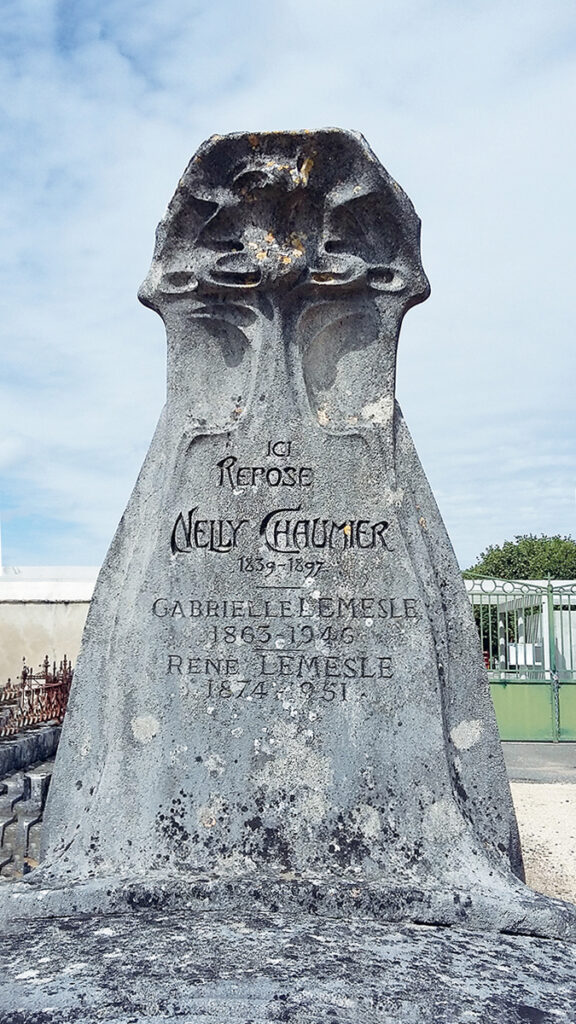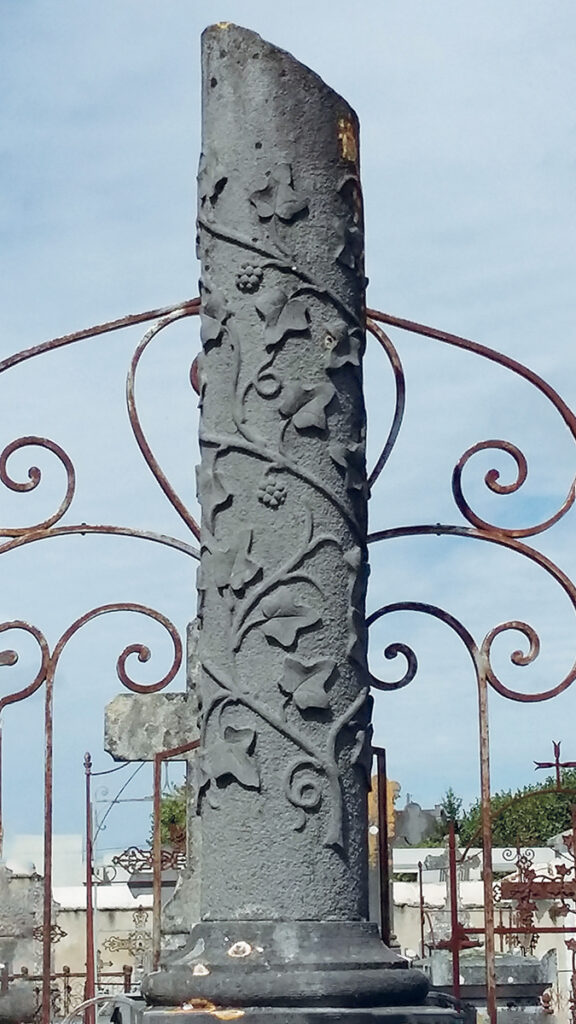The cemetery and its noteworthy tombs
⑨ The cemetery and its noteworthy tombs
In this cemetery, some tombstones deserve attention, in particular, the monument built for Nelly Chaumier, sculptured by Hector Guimard, a famous Art nouveau architect.
| « | To go to stage ⑩ → |
» |



The oldest tombs in this graveyard built on land acquired by the municipality in 1838, can be found to the north west. The tomb for Auguste Lemaître, owner of the Coursicauderie (now the town hall) and his wife Françoise Gaberot is among the most noteworthy (1840). This chapel, in neo-gothic style, is typical of the funerary architecture of the time, designed to demonstrate the social status of the deceased and the prestige they enjoyed.
Nearby is a more modest tomb : that of the Marcel family, gardeners to the Lemaître and whose son Raymond became prelate to Pope Paul VI.
There are other tombs in this ancient part of the graveyard and they are also characteristic of funerary art at the end of the 19th and beginning of the 20th century : headstones surrounded by iron or cast iron balustrades protecting the grave, truncated columns symbolising the sudden end of life as well as vertical pillars decorated with crowns, medallions and other items. The most important monument is, unquestionably, that built for Nelly Chaumier, around 1897-1898, by the famous Art Nouveau architect Hector Guimard (well known for the entrances to the Paris metro).
